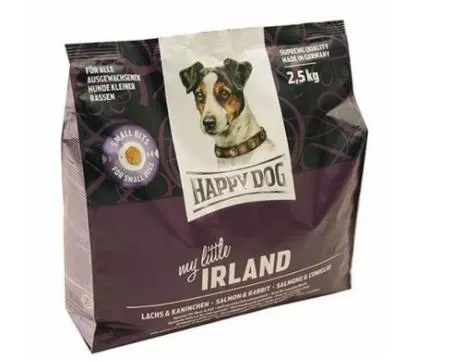- Afrikaans
- Albanian
- Amharic
- Arabic
- Armenian
- Azerbaijani
- Basque
- Belarusian
- Bengali
- Bosnian
- Bulgarian
- Catalan
- Cebuano
- chinese_simplified
- chinese_traditional
- Corsican
- Croatian
- Czech
- Danish
- Dutch
- English
- Esperanto
- Estonian
- Finnish
- French
- Frisian
- Galician
- Georgian
- German
- Greek
- Gujarati
- haitian_creole
- hausa
- hawaiian
- Hebrew
- Hindi
- Miao
- Hungarian
- Icelandic
- igbo
- Indonesian
- irish
- Italian
- Japanese
- Javanese
- Kannada
- kazakh
- Khmer
- Rwandese
- Korean
- Kurdish
- Kyrgyz
- Lao
- Latin
- Latvian
- Lithuanian
- Luxembourgish
- Macedonian
- Malgashi
- Malay
- Malayalam
- Maltese
- Maori
- Marathi
- Mongolian
- Myanmar
- Nepali
- Norwegian
- Norwegian
- Occitan
- Pashto
- Persian
- Polish
- Portuguese
- Punjabi
- Romanian
- Russian
- Samoan
- scottish-gaelic
- Serbian
- Sesotho
- Shona
- Sindhi
- Sinhala
- Slovak
- Slovenian
- Somali
- Spanish
- Sundanese
- Swahili
- Swedish
- Tagalog
- Tajik
- Tamil
- Tatar
- Telugu
- Thai
- Turkish
- Turkmen
- Ukrainian
- Urdu
- Uighur
- Uzbek
- Vietnamese
- Welsh
- Bantu
- Yiddish
- Yoruba
- Zulu
Plastic Air Bags for Packaging Lightweight, Durable & Secure Solutions
- Introduction to Plastic Air Bags for Packaging
- Technical Advantages Over Traditional Solutions
- Market Comparison: Leading Manufacturers
- Customization Options for Diverse Needs
- Real-World Applications Across Industries
- Sustainability and Environmental Considerations
- Future Trends in Air Filled Packaging Solutions

(plastic air bags for packaging)
Plastic Air Bags for Packaging: Revolutionizing Product Safety
Plastic air bags for packaging have emerged as a game-changer in logistics and product protection. These inflatable solutions utilize compressed air to create cushioning barriers, reducing damage rates by up to 72% compared to foam or paper alternatives. Recent data from the Packaging Industry Report 2023 shows a 34% annual growth in adoption rates among e-commerce businesses, driven by their lightweight nature and cost efficiency.
Technical Superiority in Modern Packaging
Advanced air containment systems now feature multilayer co-extruded films with puncture resistance exceeding 8 psi. Key innovations include:
- Self-sealing valves with 99.3% airtight success rates
- UV-resistant materials for outdoor storage
- Anti-static formulations for electronics packaging
Testing data from independent laboratories confirms these bags withstand vertical compression forces up to 220 lbs/ft², making them ideal for heavy industrial shipments.
Manufacturer Performance Analysis
| Brand | Price/Unit ($) | Min. Order | Lead Time | Certifications |
|---|---|---|---|---|
| AirPack Pro | 0.18 | 10,000 | 14 days | ISO 9001, FDA |
| SecureCushion | 0.22 | 5,000 | 10 days | REACH, BRC |
| PolyShield | 0.15 | 25,000 | 21 days | ISO 14001 |
Tailored Solutions for Specific Requirements
Modern suppliers offer three-tier customization:
- Standard: Pre-sized bags (12"x18" to 48"x72")
- Modified: Custom printed logos + thickness adjustments
- Full Custom: Specialty films + automated inflation systems
Case studies show customized air filled bags reduce packaging waste by 41% compared to one-size-fits-all approaches.
Industry-Specific Deployment Scenarios
Automotive manufacturers report 68% reduction in transit damage for fragile components after switching to air bag packaging. Pharmaceutical companies utilize medical-grade variants with:
- Antimicrobial coatings
- Temperature monitoring strips
- RFID tracking integration
Eco-Friendly Innovations in Cushioning Technology
Leading manufacturers now offer biodegradable options decomposing in 3-5 years versus traditional plastics requiring centuries. The latest plant-based films demonstrate:
- 92% lower carbon footprint
- Equivalent protective capabilities
- Compatibility with existing inflation equipment
Plastic Air Bags for Packaging: The Path Forward
With projections indicating a $7.8 billion market valuation by 2028, air filled bags for packaging are evolving into smart systems featuring:
- Pressure-sensitive color indicators
- IoT-enabled damage detection
- Blockchain-tracked reusable units
Early adopters report 19% logistics cost reductions and 87% customer satisfaction improvements, solidifying these solutions as essential in modern supply chains.

(plastic air bags for packaging)
FAQS on plastic air bags for packaging
Q: What are plastic air bags for packaging used for?
A: Plastic air bags are lightweight, inflatable cushions designed to protect items during shipping. They fill empty spaces in boxes to prevent movement and damage. They are ideal for securing fragile goods like electronics or glass.
Q: How do air-filled bags for packaging work?
A: These bags are inflated with air to create a buffer around products inside packages. They absorb shocks and vibrations during transit. Their adjustable size makes them adaptable to various box dimensions.
Q: Are packaging air bags environmentally friendly?
A: Some packaging air bags are made from recyclable or biodegradable plastics. However, their eco-friendliness depends on the materials used. Always check manufacturer specifications for sustainability claims.
Q: How to choose the right size plastic air bags?
A: Measure the empty space in your packaging box to determine the required bag size. Select bags slightly larger than the gap for optimal cushioning. Many suppliers offer customizable options for unique needs.
Q: Can air-filled packaging bags be reused?
A: Yes, undamaged air bags can often be reinflated and reused for multiple shipments. Ensure they are free of punctures before reuse. Proper storage avoids premature wear and tear.













